Observations Reuben Shaw Unexpected results
It’s not every day a young scientist gets a jaw-dropping result he knows no one will believe. But that’s exactly what happened to Professor Reuben Shaw 20 years ago, in the spring of 2003.
Inside Salk sat down with Shaw to learn about his scientific journey and vision for Salk’s Cancer Center.
Shaw was a postdoctoral researcher at Harvard Medical School studying a tumor-suppressing gene called LKB1, which encodes an enzyme by the same name. When mutated and no longer functioning as a tumor suppressor, LKB1 can cause several types of inherited cancers. In fact, LKB1 is the third-most frequently mutated gene in human lung cancer, meaning tens of thousands of new patients are diagnosed with lung cancer containing mutated LKB1 every year. Unfortunately, the prognosis for those patients is worse than for lung cancer patients with any other mutated cancer gene.
That day back in 2003, after years of studies to understand how LKB1 worked to block tumor growth, Shaw’s experiment showed that LKB1 was switching on another enzyme, called AMPK. At first, Shaw couldn’t believe his eyes. AMPK was known for being a central metabolism gene linked to diabetes. It seemed too wild to be believable—could an anti-cancer gene really work by activating an anti-diabetes gene?
Shaw’s finding was so unexpected, he thought the scientific community wouldn’t believe it. And initially, many didn’t. But Shaw was right. AMPK is a fuel gauge that senses when a cell’s fuel is low—like when we fast or exercise—and changes the cell’s metabolism in response. In the case of cancer, AMPK prevents developing tumors from getting fuel to grow. So, Shaw’s metabolic connection between cancer and diabetes via LKB1 and AMPK made sense in the end. This discovery also helped explain how the widely prescribed diabetes drug Metformin works (it also turns AMPK on), as well as pointing to a new way to tackle cancer: by cutting its fuel supplies.
That discovery led to a job offer from the Salk Institute, and today Shaw is a professor and director of its National Cancer Institute (NCI)-designated Cancer Center. Inside Salk sat down with Shaw to find out more about his scientific journey.
Were you always interested in science?
RS: I grew up on a dairy farm in rural upstate New York, on around 50 acres in the Taconic Mountains, which are known as the Berkshires when they cross into Massachusetts. We basically owned this little hill, so I grew up exploring the woods and the creeks and everything around the house. Then, when I went off to college at Cornell University, I just gravitated toward biology.
You’ve said that your undergraduate years were an exciting time to be in biology—why was that?
RS: When I was taking freshman biology, the ability to identify disease genes had just happened in the previous handful of years, in the mid-’80s. The Huntington’s disease gene. The cystic fibrosis gene. Early-onset breast cancer genes. Doctors had been treating these diseases with whatever crude methods could relieve some of the symptoms, but until the 1980s, the actual root causes of these and so many other diseases were literally unknown. That meant, for the first time, treatments could be far more strategic and targeted—actually scientific—versus whatever random thing had been found up to that point to do anything to help. As a young college student, it was just mind-blowing to me to connect genes to diseases so clearly.
What made you come to Salk when you had lived your whole life in the Northeast and had offers from major schools and cancer centers in Boston and New York?
RS: At first it seemed crazy to leave the only environment I had ever known and had done so well in—the Northeast. But there was something very different about Salk than the other places I had job offers from. All of them were strong in cancer research, but the difference was that, despite being small, Salk also had the world’s luminaries in metabolism, physiology, and neuroscience. Salk had Professor Tony Hunter [a cancer expert], but it also had Professor Ronald Evans [a metabolism expert]. And they were both down-to-earth despite being brilliant and acclaimed scientists! All in this one small, amazing building with no departments and no walls between labs—and with a clear track record of labs working across fields, resulting in unexpected findings decade after decade. That idea and the potential to work in such a concentrated “think tank” of experts across fields, from plants to neuroscience to metabolism to cancer, was just unique.
Did you find that to be true? Did the track record of working across fields influence your lab’s research when you got here?
RS: Yes and yes. While doing cancer research using cutting-edge genetic mouse models and testing new therapies based on changes in tumor metabolism in those models—which my lab might have done anywhere I went—we also pursued cross-disciplinary collaborations that would not have happened anywhere else. In work with Professor Marc Montminy, we examined how these same biochemical circuits control diabetes, and how they extend life span in some species; with Evans we studied how these circuits govern the response to exercise—and that was all in the first 10 years I was here. Since then we have made connections to neuroscience that relate to Professor Rusty Gage’s research, and are even working with Professor Wolfgang Busch on how this same pathway impacts root development in plants when they are deprived of nutrients. We’re working with Professors Christian Metallo and Alan Saghatelian on whether drugs originally made for diabetes may someday find great use not only in cancer, but also in a wide variety of other diseases.
Often, being an outsider to a field is what enables big discoveries.
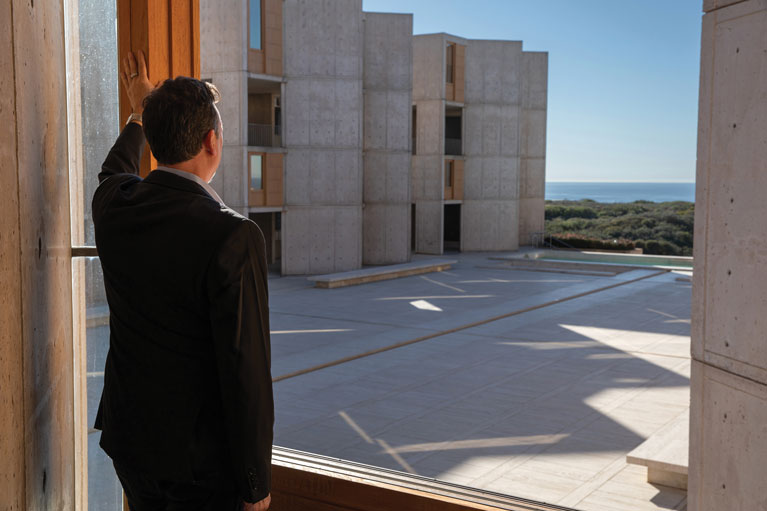
“Discoveries made at Salk have led to successful cancer treatments that have literally changed people’s lives. But as much as we’ve accomplished already, I think the future is going to be even brighter because Salk has built up so much momentum in cancer research.”
– Professor Reuben Shaw
What are some of the projects you are most excited about in the lab now?
RS: We have had good fortune in discovering and pursuing new potential therapies that target metabolic changes in specific genetic subsets of cancer, but this has been painstaking work. It takes five years just to test one possibility of one node in one subtype of cancer. Over the last decade, I have helped recruit a “dream team” of the next generation of professors who are experts in different facets of metabolism in normal and diseased cells and tissues, as well as the immune system. Collectively, this broad set of relatively new Salk faculty are collaborating and really making larger strides to unbiasedly decode all metabolic vulnerabilities within major classes of cancer and the surrounding microenvironment, including immune cells. In the meantime, we have also made major strides in the basic understanding of how different cellular biochemical pathways communicate with each other in response to changes in nutrients and diet and how the body adapts.
New technologies and new insights have made this an exciting time to be studying metabolism and therapies in a wide variety of diseases, including cancer.
This is the 50th anniversary of the Cancer Center at Salk. As director, what are your thoughts about that?
RS: Salk has been laser-focused on cancer discoveries and cancer therapies for 50 years, and there are only a handful of organizations in the US that are part of that legacy. It’s remarkable. Discoveries made at Salk have led to successful cancer treatments that have literally changed people’s lives. And our [National Cancer Institute] designation—the fact that we were already organized as cancer researchers under Salk Professor and Nobel Laureate Bob Holley is what led us to be one of the first places in the country to get the NCI designation, which is really something to be proud of. Holley and Salk Professor Renato Dulbecco, another Nobel laureate, put Salk on the map for cancer, and Professor Emeritus Walter Eckhart and Hunter—along with another wave of faculty they hired—continued the legacy, keeping Salk’s Cancer Center at the forefront of cancer research in the US for 50 years. That does not happen easily and it is not maintained easily.
But as much as we’ve accomplished already, I think the future is going to be even brighter because Salk has built up so much momentum in cancer research. We have incredible researchers supported by phenomenal donors. And we never forget who we’re really working for—cancer patients and their loved ones, who are counting on us for breakthroughs.
What keeps you motivated?
RS: What keeps scientists motivated is the unknown—discovering things that are completely unknown and continuing to overturn new rocks to see what’s there. And, then, having the intellectual freedom to pursue different aspects of the discoveries. That’s why I came to Salk. We do not have research “silos,” so some of the discoveries may lead to new cancer therapies and others may lead to new Parkinson’s therapies.
As I get older and more established in my career, it is more and more impactful to me to help enhance and promote the careers of the next generation of researchers. At the end of the day, the world of science is small—I am still connected to people I trained with in Boston, the people who I have collaborated with over the past 20 years, and the students and postdoctoral researchers who have worked with me, several of whom have themselves become professors or leaders in biotech companies developing future medicines. We all form a human web of people doing biomedical research across the country, moving the ball down the field to make new research discoveries and design the therapies of the future. In my lifetime, I really hope to see major forms of cancer put into steady remission, and in my children’s lifetime, to have cancer turned into an ailment that gets treated and monitored, but one in which survivors then return to an otherwise unencumbered life. It’s good to have goals.
For more details, listen to Shaw’s interview on episode 14 of the Salk podcast at salk.edu/podcast.
Support a legacy where cures begin.
Featured Stories
 Journey of a lifetime—The Cancer Center at Salk celebrates 50 years of life-changing discoveriesSalk’s Cancer Center has become a powerhouse of critical discoveries that have led to treatments and remissions for patients. The Center’s mission is to make current generations the last to see cancer as anything other than a routine diagnosis.
Journey of a lifetime—The Cancer Center at Salk celebrates 50 years of life-changing discoveriesSalk’s Cancer Center has become a powerhouse of critical discoveries that have led to treatments and remissions for patients. The Center’s mission is to make current generations the last to see cancer as anything other than a routine diagnosis. 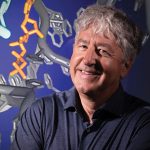 Introducing Salk’s newest president, Gerald JoyceJoyce, a pioneer in the field of test-tube evolution, succeeds Professor Rusty Gage, who will return to his lab following a transformative leadership tenure. Joyce assumed the role April 21, 2023.
Introducing Salk’s newest president, Gerald JoyceJoyce, a pioneer in the field of test-tube evolution, succeeds Professor Rusty Gage, who will return to his lab following a transformative leadership tenure. Joyce assumed the role April 21, 2023. 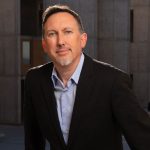 Reuben Shaw—Unexpected resultsIt’s not every day a young scientist gets a jaw-dropping result he knows no one will believe. But that’s exactly what happened to Professor Reuben Shaw 20 years ago, in the spring of 2003.
Reuben Shaw—Unexpected resultsIt’s not every day a young scientist gets a jaw-dropping result he knows no one will believe. But that’s exactly what happened to Professor Reuben Shaw 20 years ago, in the spring of 2003.
 Tony Hunter—How an animal virus discovery more than 40 years ago led to one of today’s most successful cancer drugsThe story behind how Hunter discovered the first kinase that phosphorylates the amino acid tyrosine. The finding led to the development of Gleevec, a medication that is now routinely used to treat chronic myelogenous leukemia (CML).
Tony Hunter—How an animal virus discovery more than 40 years ago led to one of today’s most successful cancer drugsThe story behind how Hunter discovered the first kinase that phosphorylates the amino acid tyrosine. The finding led to the development of Gleevec, a medication that is now routinely used to treat chronic myelogenous leukemia (CML).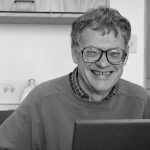 Charles Stevens—A beautiful mind, and a heart to matchA pioneer in neuroscience, Distinguished Professor Emeritus Charles F. Stevens died peacefully on October 21, 2022, at his home in San Diego. He was 88.
Charles Stevens—A beautiful mind, and a heart to matchA pioneer in neuroscience, Distinguished Professor Emeritus Charles F. Stevens died peacefully on October 21, 2022, at his home in San Diego. He was 88.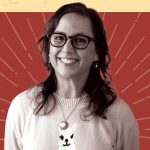 Leona Flores—Rocking cancer researchFlores had studied the design of the Salk Institute as an architectural engineering student, but never did she imagine that she would be the executive director of the Institute’s Cancer Center years later.
Leona Flores—Rocking cancer researchFlores had studied the design of the Salk Institute as an architectural engineering student, but never did she imagine that she would be the executive director of the Institute’s Cancer Center years later.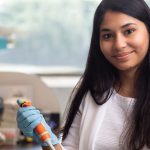 Payel Mondal—Cancer researcher by day, financial planner by nightMondal is a postdoctoral researcher in Assistant Professor Christina Towers’ lab where she studies the mechanisms involved in cancer progression. Her hope is that her projects will someday be translated into therapeutics to help people.
Payel Mondal—Cancer researcher by day, financial planner by nightMondal is a postdoctoral researcher in Assistant Professor Christina Towers’ lab where she studies the mechanisms involved in cancer progression. Her hope is that her projects will someday be translated into therapeutics to help people.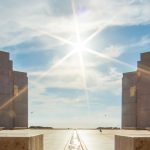 Salk receives $1.5 million from the Sol Goldman Charitable Trust and $1.25 million from The Jay and Sarah Flatley FoundationThe Salk Institute is grateful to its many generous supporters.
Salk receives $1.5 million from the Sol Goldman Charitable Trust and $1.25 million from The Jay and Sarah Flatley FoundationThe Salk Institute is grateful to its many generous supporters.




















































